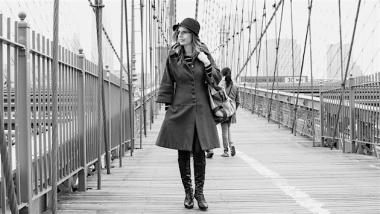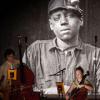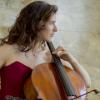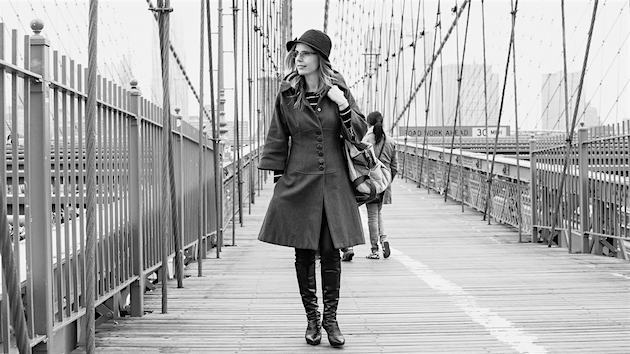
Pronounced with a long or short “i,” applied as an adjective, adverb or metaphor, “windy” describes electroacoustic composer Anna Clyne. Or not, because the 38-year-old London-born artist and her multidisciplinary work resist wrapping themselves into tidy bundles.
From stark, atmospheric or windswept orchestrations to stormy, sometimes cacophonous combinations of percussion, strings, and dance to lush-to-linear symphonic or chamber music, a tornadic energy delivers her compositions to orchestras and ensembles worldwide. Collaborations with artists working in other disciplines expand her work. More than anything, Clyne is tough to pin down.
Even a recent cellphone interview on the single day she blows into New York City is initially blustery. Our conversation is broken up by wind, a little like speaking while dropped into the well-crafted chaos of a movement from Clyne’s Abstractions. She was to fly the next day to London for an engagement, then back to Berkeley for Full: Pairs, a program curated by Clyne at Berkeley Art Museum and Pacific Film Archive on March 31. Berkeley Symphony musicians and friends will play compositions by Berkeley Sounds Composer Fellows, along with pieces written by their mentors. The program pairs Aiyana Braun with Jennifer Higdon; Ursula Kwong-Brown with Myra Melford; Peter Shin with Ted Hearne; and Anna Clyne with Julia Wolfe.
Clyne received a 2015 Grammy Award nomination for best contemporary classical composition for her double violin concerto, Prince of Clouds. Currently Berkeley Symphony’s Music Alive composer-in-residence, she has served in similar positions with Baltimore Symphony Orchestra, Chicago Symphony Orchestra, and L’Orchestre national d’île-de-France. Clyne has been commissioned by American Composers Orchestra, BBC Radio 3, Carnegie Hall, Houston Ballet, London Sinfonietta, Los Angeles Philharmonic, Seattle Symphony, and more.
Fellowship programs and composer-in-residence opportunities offer long-term relationships: What other benefits come to composers — and are there risks?
I’ve been fortunate working with different orchestras. Residencies allow you to really get to know the musicians you’re writing for. You can get close to the individuals so you’re not thinking of a flute or violin, you’re thinking of Chris or Martha. You’re thinking of real people: it’s invaluable.
With the Berkley Symphony fellowship program, there’s opportunity to curate contemporary music: Who are the up-and-coming composers in the community? You get to find that out. Then, you can tie the pieces together when you move along the way to other locations. That’s what I’m doing here in Berkeley. I get to know what people are writing today.
Young composers have these programs and mature composers receive commissions: is there a gap anywhere in the pipeline? And specifically, at what stage is support most lacking for women composers?
Berkeley is a great example of programming by women that’s not just because they’re women, it’s because it’s great music. [More generally], there’s a gap from young to more emerged composers so it’s interesting to see the avenues they’re taking. It’s difficult to make a living as a composer, but there are ways to supplement the transitions; there’s education, arts administration. And there are people creating their own ensembles and festivals, like Bang on a Can’s “Banglewood” summer music camp. (Banglewood is the nickname for the annual Bang on a Can Summer Festival in North Adams, Massachussetts.)
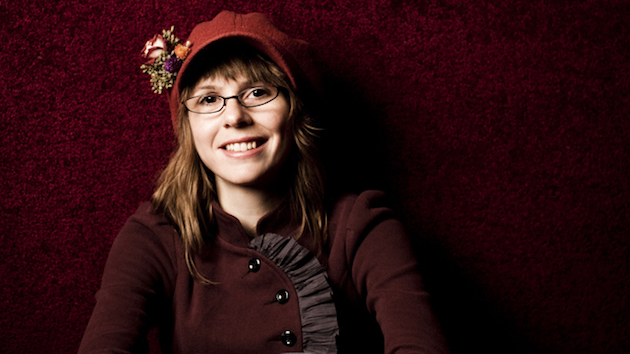
Let’s talk about the collaborative element of your work: Is there a moment when you sense the climate is right and a collaboration will be rewarding, or is it instinctive?
My experience is you can tell early on — even in discussions before committing — if there’s a spark. I sense an immediate synergy when it works, although sometimes you decide to go ahead anyway. When it doesn’t unfold as you imagined, that’s part of the process too. The learning curve can be even greater there. I haven’t had a bad one, but trusting your gut is important. You’re vulnerable, so opening up must be done with caution, but must happen eventually.
Will you describe a recent collaboration that worked and the results?
I did a piece for Houston Ballet, with [choreographer] Nicolo Fonte. We discussed key ideas. We decided I’d compose four to five minutes, feed it to him, then have a dialogue. I wrote chaotic music to open the work. He imagined it would follow with more chaos, whereas I had imagined a serene following. I tried his way. It worked and caused me to go along a different path.
While working with choreographers, visual and film artists, and others, what have you discovered about your work?
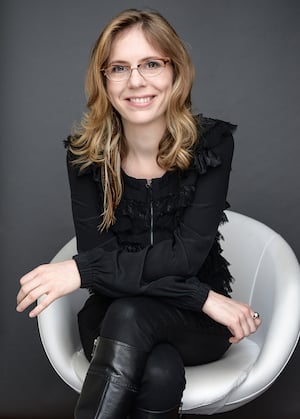
The sense of time and scale might be different than what I’d do ordinarily. Nicolo used a piece of mine before the one I mentioned. He muted parts of the composition while the dance continued. I learned that choreography sometimes takes longer to get through an idea than I do as a composer.
In another project with Kitty McManee, I sent one passage with a solo in the orchestra where we wanted something creepy and sinister. It had an undulating melody with the woodwinds. She choreographed it as a solo and asked for music for a second part where another dancer joined in. I composed percussion with the primary voice in the marimba. If you roll on the notes you get a melodic contour with a sonority that pops out almost like the phrasing of a voice.
Another example of how collaborations cause something: I wrote a violin concerto [The Seamstress] for Jennifer Koh, inspired by a Yeats poem. I wanted to evoke Irish melodies, so the opening is a folk-ish song. Pulling on the scales of that musical language was deliberate.
Berkeley Symphony did Abstractions. The first movement is [based on] a contemporary image that is soft, with hushed hues of deep purple. I wanted to reflect that, so I used the double bass bowing the tail piece. It’s very deep, barely audible, but if you combine many basses, it has a ghostly, atmospheric sound world. I come from electroacoustic composition so learning how to create that drenching sound with an orchestra instrument was exciting.
How do you avoid gimmicks or the temptations of new sound technology?
With each piece I try to say something new. I try not to use a technique for the sake of being clever. It must be used for what I want to express, to communicate with the audience. That’s the challenge for any composer: to stay true to your voice. I get input from putting on headphones, listening and dancing to it in my studio. If it doesn’t feel right to me, something is wrong.
You’ve previously expressed appreciation for mentoring you received. Please share two or three principles or techniques you have found helpful.
I was primarily self-taught until my third year at university. I had my first composition lessons then. My mentors have been critical with providing me with tools. From Julia Wolfe, I learned to trust my instincts. For finding my musical voice, having the space to explore that was helpful.
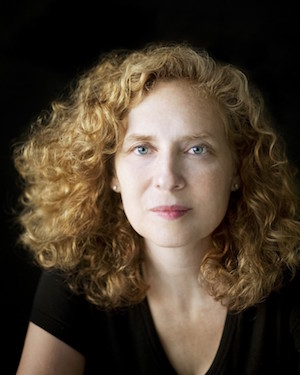
She helped me to take electronic principles and move them into the orchestra. She gave me confidence. She brought the minimalist background that’s in her music and showed how I could take a five-second gesture and it could become five, even ten minutes of music. I owe that to her.
When I mentor, I don’t impose my compositional style. I try to tap into the composer’s process, their expression.
Does this approach change when working with a young composer? Are there things you must do or must not do, things said or never said?
Someone at university level is taking courses in harmony, counterpoint, ear training, history, and world music that are shaping their work. When mentoring composition, you’re not teaching those nuts-and-bolts, but how to use them. Form becomes important. Each composer needs advice in different areas: It’s specific to the individual. Within the branches they’re writing for, even for conventional string quartets, I encourage them to work with electronics and to collaborate with artists from other fields. Film, dance, and visual artists are vital to a composer today.
The particular compositional voice of each of the fellows on the Full: Pairs program: What features distinguish their work?
Aiyana captivated us because she is young and already is trying new things. Her work has flower pots that create the percussion. They rub against each other and she discovered that sound. She layers it in unique ways.
Ursula explores interesting rhythmic interplay and counterpoint. A fast gesture might have a contrast superimposed to create interesting texture. Her acoustic and electronic combinations are sensitively combined.
Peter’s electronic music is a fixed, bold gesture fused with live music. He has experience writing for orchestra that makes him confident and his work striking. He gets extraordinary sound out of the musicians.

